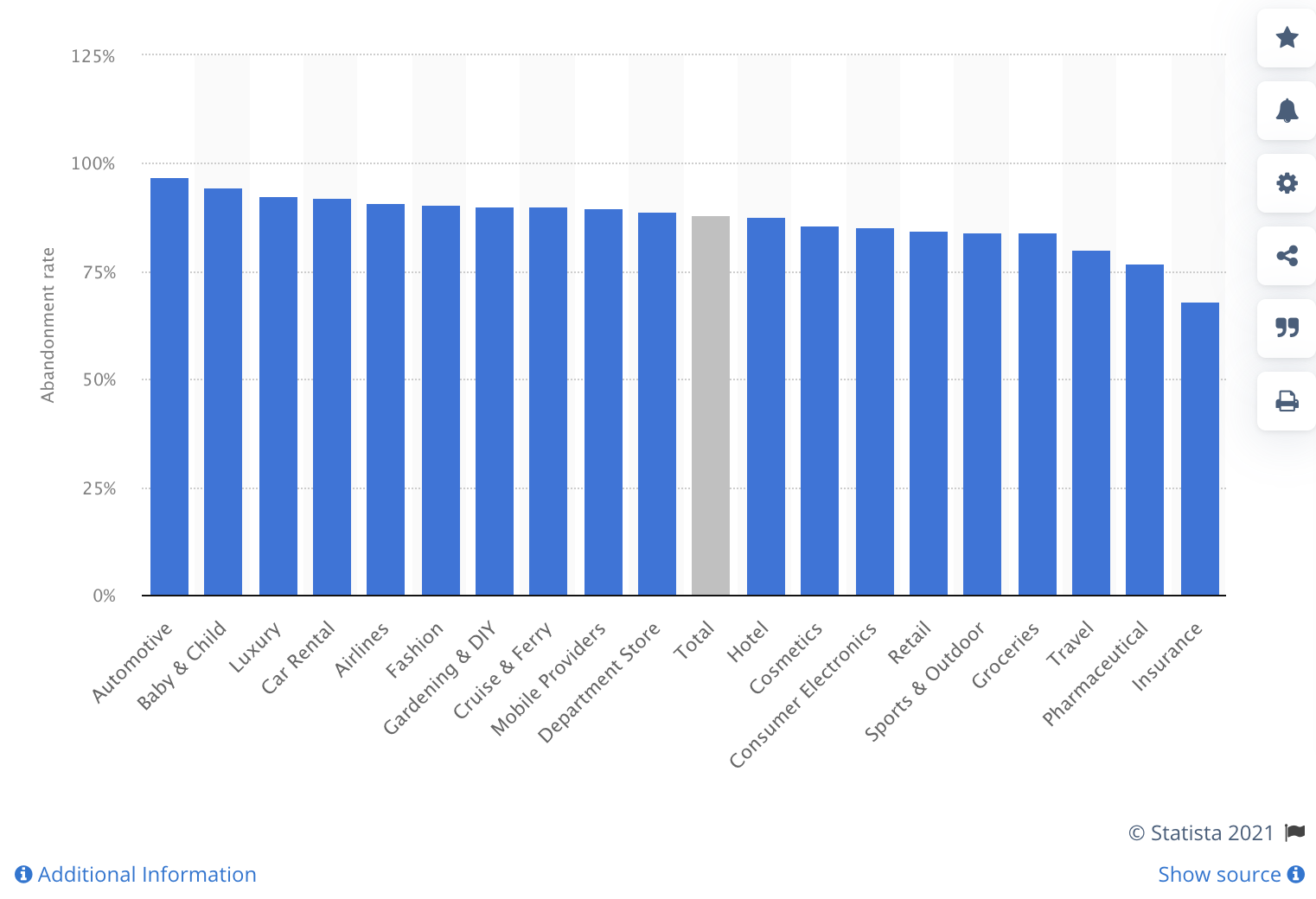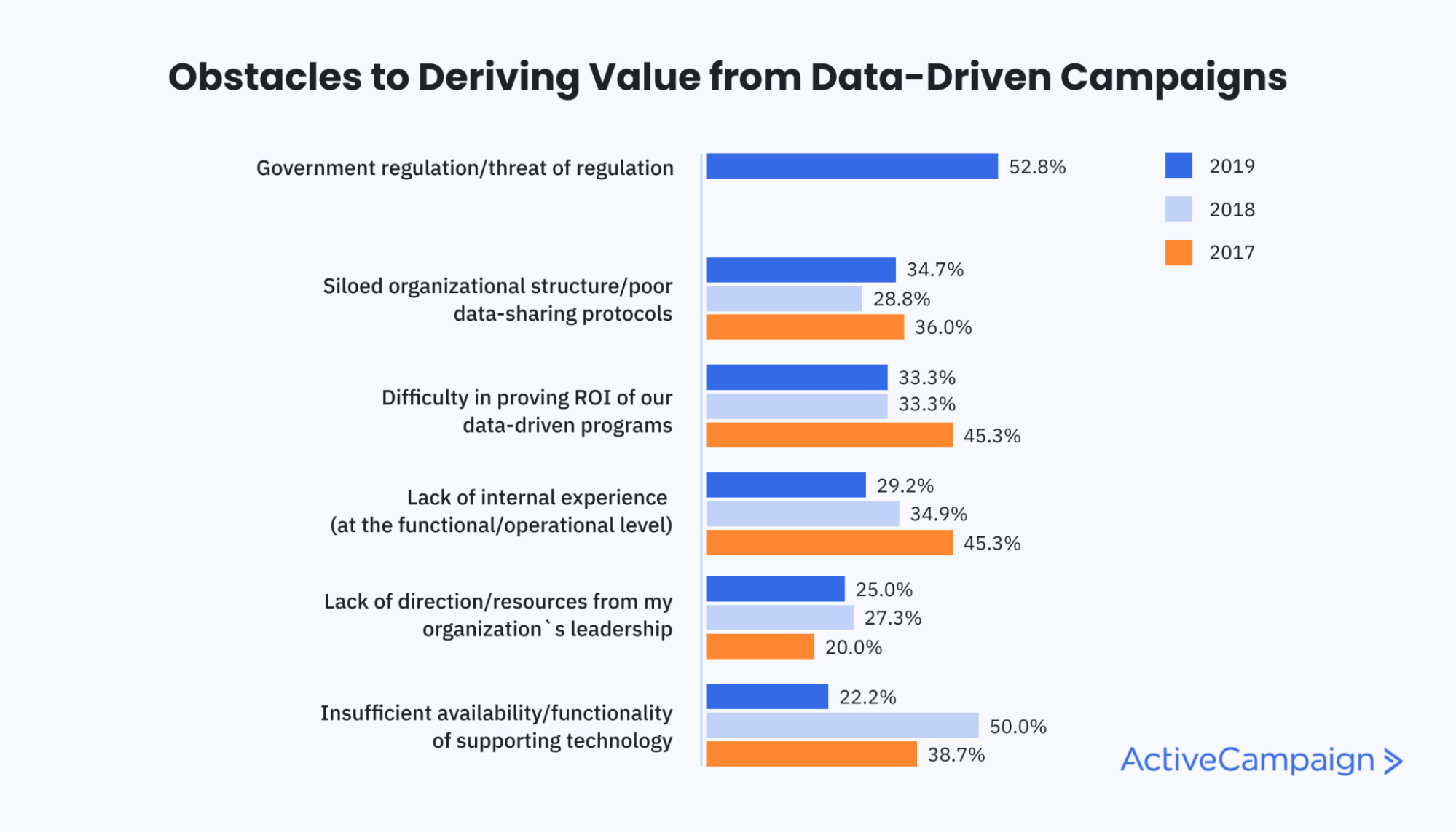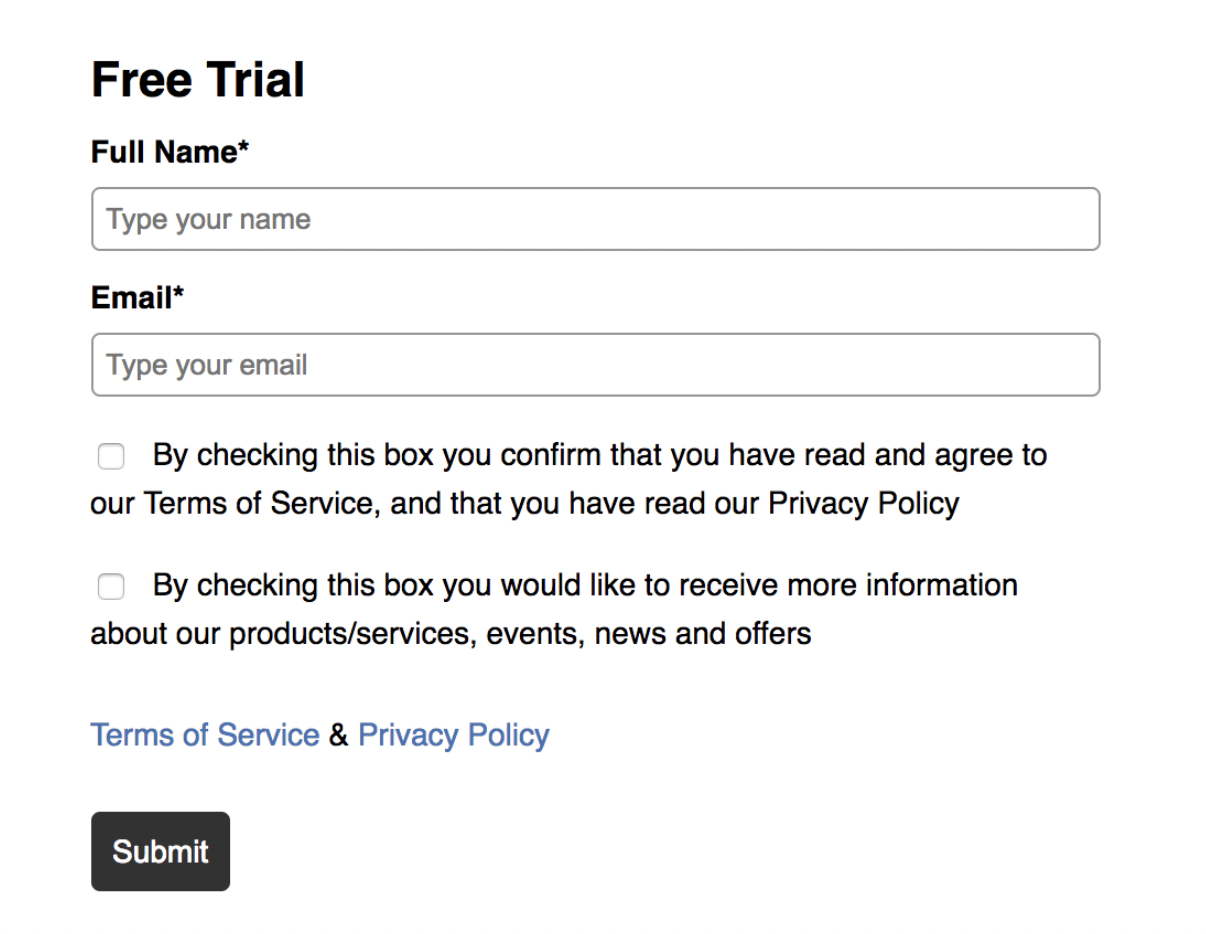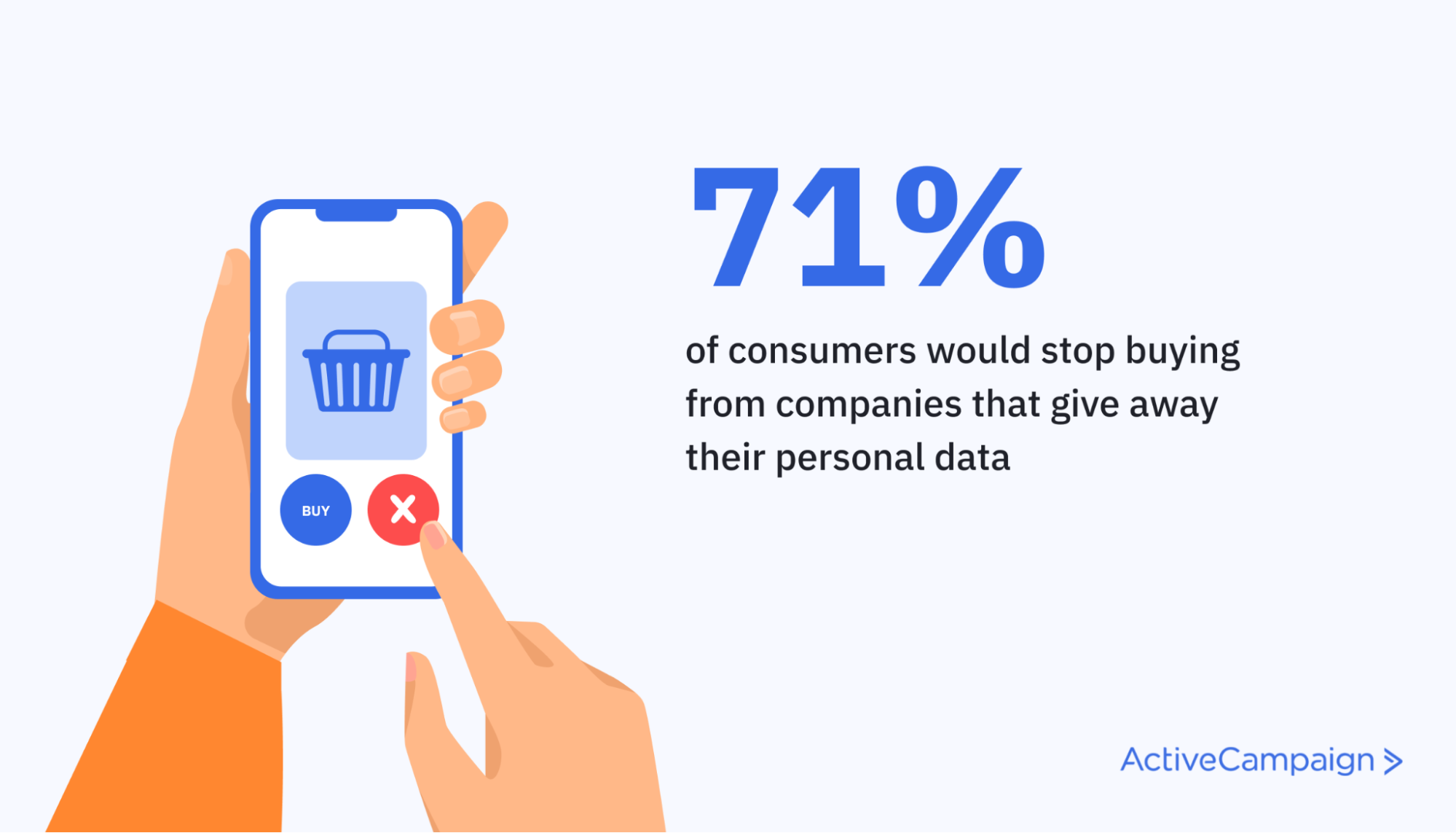Without the right data, you’ll waste your budget on campaigns that fail to deliver a measurable ROI because your team didn’t have the information needed to make informed decisions.
Working without data also limits your reach and makes it difficult to improve the customer experience. You can’t improve what you’re not measuring.
It’s not an understatement to say that data is one of the most critical aspects of marketing.
However, not all data is created equal. Some come directly from customers, while others are purchased from external sources.
Each customer data type has its own set of benefits and challenges. Understanding them will help you create more effective marketing campaigns and remain compliant with privacy regulations.
This article will take an in-depth look at first, second, and third party data, including what the differences are and how they’re used. We’ll also cover how your company can stay compliant with each data type.
What is first party data?
First party data is the data that you collect directly from your customers. It can come from website visitors, email subscribers, surveys, purchases, and phone calls.

Examples of first party data include:
- Demographic data
- Behavioral data
- Social media data
- Subscription data
- Customer feedback
- Cross-platform data
- Attitudinal data
A common way to collect first party data is through a tracking pixel, a snippet of code that loads when a user lands on a site. It lets companies collect information about visitors, such as the pages they visit and the products they add to their carts.
Another way is with feedback emails, which companies like Slack send to customers to gather feedback.

In terms of data types, first party data is the most valuable because you’re getting it firsthand from your customers. Unlike other data types, you can verify its accuracy and authenticity.
If you’re not already collecting first party data, you’re leaving a ton of sales on the table as you can use these insights to deliver more personalized customer experiences.
But you also need to be transparent with the data you collect. 73% of consumers are willing to share personal information as long as brands are transparent and won’t abuse it.
Drawbacks to first party data include:
- Limited scale: If you’re a startup or small business, you may not have enough first party data to make assumptions about your audience.
- Limited scope: The depth of the first party data you collect is limited to the scope of your operations.
- Privacy concerns: Consumers are more sensitive about how brands collect and use their data and may not be willing to share personal details.
How is first party data used?
Companies use first party data for retargeting — a form of online advertising that lets you display targeted ads to people who have already visited your website.

If you’ve ever clicked through to a product page and seen ads for that same product on your social media feed, that’s an example of retargeting.
Customers may add a product to their shopping cart but not complete the checkout process. They might have second thoughts or get distracted by something else.
Over 88% of online shopping carts are abandoned.

If visitors abandon their shopping cart, you can target them with relevant ads as they browse other websites and bring them back to your site to complete their purchases.
Retargeting isn’t limited to ads.
Another way to use first party data is to combine it with email retargeting, which is what Morrow Audio did to bring customers back to its store.
Here’s an email that Morrow Audio sent to customers who abandoned their carts:

Using first party data with email retargeting helped Morrow Audio recover 26% of its abandoned carts and bring in sales it would’ve otherwise lost.
In short, first party data helps you gain deeper audience insight. It also lets you leverage segmentation in your marketing, allowing you to deliver personalized customer experiences.
What is second party data?
Second party data is first party data collected and sold by another company. Trusted partners may also share their first party data with each other if there’s some overlap with their audiences.

For example, imagine you’re trying to enter a new market, but you don’t have the right data. To kickstart your marketing efforts, you can either buy the data or partner with another company.
46% of marketers say they encounter problems with data quality and accuracy when optimizing their campaigns.

Second party data is valuable because you can use the data to complement your own and build a complete picture of your audience.
Drawbacks to second party data include:
- Limited availability: Collecting second party data isn’t easy, as companies aren’t always willing to share their customer data.
- Expensive: While there are marketplaces for customer data, buying on a large scale can be costly.
- No way to verify: You don’t know how a company has collected its data, meaning you have no way to verify its accuracy.
How is second party data used?
Companies use second party data in ways that are similar to first party data. You can create ads, nurture leads, and improve the targeting of your campaigns.
Obtaining new data about your customers can deliver additional insights that you can use to refine your messaging and make your communications more relevant.
Why is this important? Because companies are still sending messages that aren’t relevant to their audiences.
93% of consumers received marketing messages that weren’t relevant to them. What’s more, 44% would consider switching to brands that did personalization better.

One of the drawbacks of first party data is its small scale. Working with partners can help you overcome these limitations and fill in any gaps.
Another way to use second party data is to reach new audiences.
As an example, let’s say you run a travel agency. One way to expand your client base is to work with accommodation providers as you share similar audiences.
You can then use the data you gather to reach more customers through Facebook Custom Audiences — an ad targeting option that lets you show ads to people who are likely to engage with your brand.
In short, second party data can develop more insight and help you reach new audiences. But it goes without saying that it’s important to work with trusted partners.
What is third party data?
Third party data is data you purchase from brokers that don’t have any direct links to your customers. Brokers typically aggregate data from multiple sources into a single dataset and offer them for sale.

If your business is new, the amount of first party data you have is likely limited.
The benefit of third party data is that it’s readily available. The data that brokers like Experian and Acxiom offer is also organized into segments, so you can buy only the datasets you need.
More companies are turning to external data sources to inform their marketing strategy. In fact, U.S. brands and publishers spent $11.9 billion in 2019 on third party data — a figure that will only continue to go up.
Drawbacks to third party data include:
- High cost: Similar to second party data, purchasing third party data from external brokers can be expensive.
- Lack of transparency: You can’t verify its accuracy because you don’t know how the broker collected its data.
- Not unique: Any third party data that you purchase is also available to other parties, including your competitors.
How is third party data used?
27% of B2B marketers say that one of their company’s biggest obstacles to data-driven marketing is inaccessible and incomplete customer data.

Because of its volume and scale, you can use third party data to enhance your own first party data and get a complete view of who you’re targeting.
As an example, MGM Resorts International used third party data from Adobe’s Audience Marketplace to reach luxury travelers and people interested in Las Vegas.
In one campaign, the company identified an airline carrier that was running discounts to Las Vegas. Using first and third party data, MGM was able to reach that segment with a targeted campaign it created in just three days.
Similarly, you can use third party data from other sources to complement your own data and make your targeting efforts more precise.
So far, we’ve looked at different types of customer data, including what they are, how they’re collected, and how companies use them to improve their bottom line.
However, no matter which type of customer data you collect and use, you must ensure your business is compliant with all relevant data privacy laws.
How to stay compliant with first, second, and third party data
Regulations like the General Data Protection Regulation (GDPR) in the EU, the California Consumer Privacy Act (CCPA) in California, and other data privacy laws mean companies have to adhere to certain policies when it comes to collecting, storing, and using customer data.
Failure to comply with data privacy regulations can hurt your brand reputation and result in heavy fines. Let’s look at how you can stay compliant with each data type.
First party data compliance
No matter how you collect and use first party data, you need to be transparent. 73% of consumers say it’s “very important” for brands to protect their data.

Make sure you have a clear privacy policy that states exactly what data you collect and how you use it.
As an example, our privacy policy includes a section on how we use the data we collect.

If your company is based in the EU or you handle data from customers in the EU, you must collect consent to avoid any GDPR fines. You’ll also need to record proof of consent.
Here’s an example of a lead capture form that obtains consent:

Consent must be freely given, so pre-checked boxes won’t qualify as consent. Make sure to provide a way for customers to opt out of any data collection.
For more information, check out our guide on collecting consent to prepare for GDPR.
Second party data compliance
71% of consumers said they’d stop doing business with companies that gave their personal data away without their consent.

If you’re sharing customer data with other partners, make that clear in your privacy policy and obtain the necessary consent before you share that information.
Likewise, make sure that any companies you partner with comply with all data privacy regulations. They should have a clear privacy policy and obtain consent from customers.
Third party data compliance
52.8% of organizations cite government regulations as an obstacle to deriving value from their data-driven marketing efforts.

While frustrating from a marketing standpoint, these privacy laws were put in place to protect consumer data against misuse.
If you’re purchasing third party data, you must make sure to buy from companies that comply with data protection laws like GDPR.
Your company must also inform individuals that you’ve collected their data and will be using it for advertising purposes. If any users object, you must remove them from your list or database and not use their data.
Start building your first party data strategy today
Companies have relied on third party cookies to fuel their advertising. These cookies are placed by other websites (not the one you’re visiting) to track users across the web.
However, Safari and Firefox have already implemented measures to block third party cookies in their browsers to prevent advertisers from tracking users. Google has also stated that it’ll phase them out in Chrome by 2023.
As cookieless browsing becomes the norm, brands should prioritize first party data. Here are some tips for building a first party data strategy:
- Invest in Customer Relationship Management (CRM) software
- Conduct surveys and collect feedback from your customers
- Offer value in exchange for data (e.g., discounts, loyalty programs, etc.)
- Utilize lead generation campaigns
- Determine content preferences to segment your audience
- Test and experiment with new marketing channels
Creating a first party data strategy isn’t easy.
It’ll still give your company a competitive advantage, as you’ll be able to use the insights you gain to reach new audiences and drive more sales.
Talk to an expert at ActiveCampaign today on how you can use our marketing platform to manage your customer data and build your first party data strategy.





